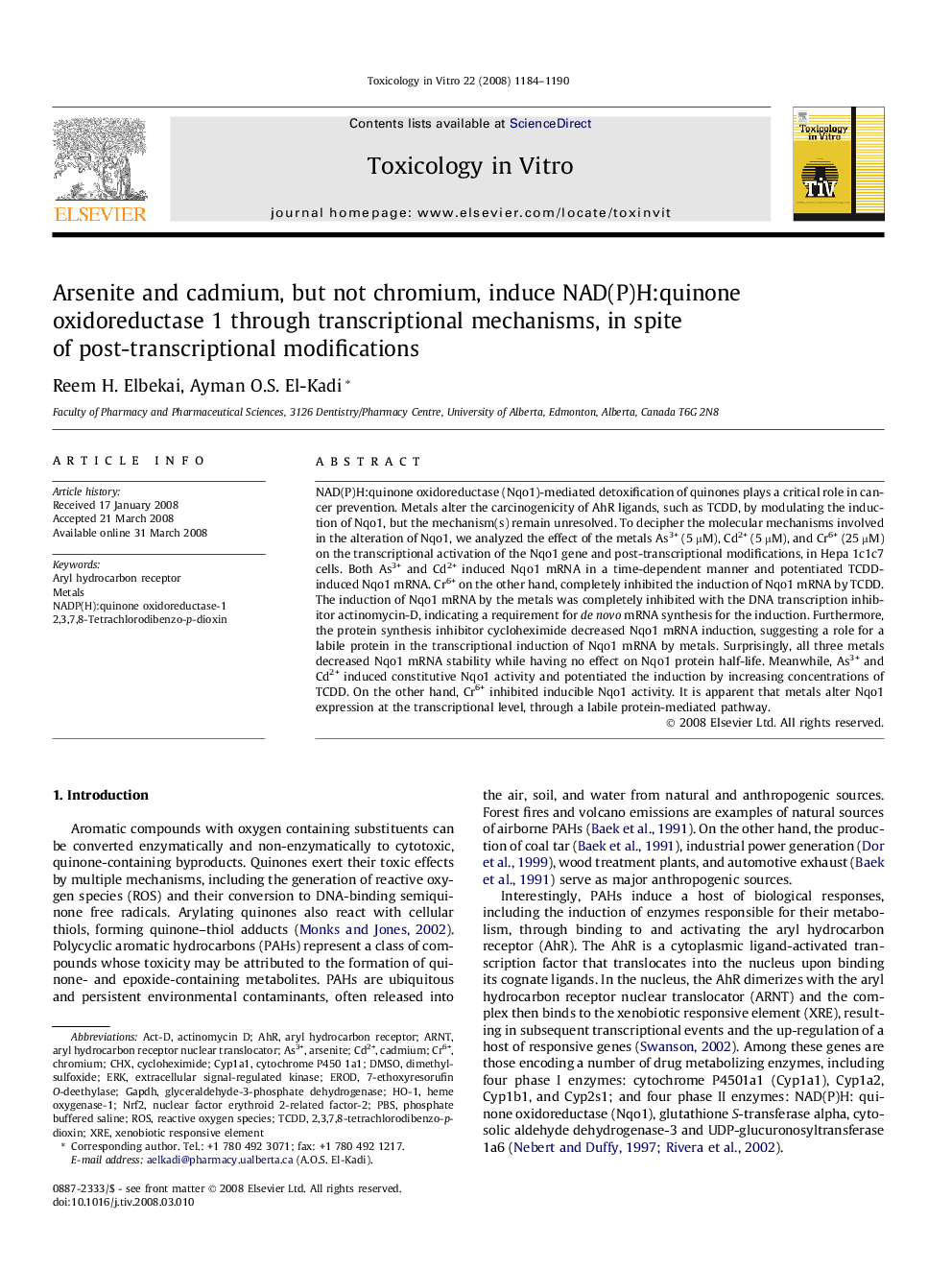| کد مقاله | کد نشریه | سال انتشار | مقاله انگلیسی | نسخه تمام متن |
|---|---|---|---|---|
| 2603800 | 1133838 | 2008 | 7 صفحه PDF | دانلود رایگان |

NAD(P)H:quinone oxidoreductase (Nqo1)-mediated detoxification of quinones plays a critical role in cancer prevention. Metals alter the carcinogenicity of AhR ligands, such as TCDD, by modulating the induction of Nqo1, but the mechanism(s) remain unresolved. To decipher the molecular mechanisms involved in the alteration of Nqo1, we analyzed the effect of the metals As3+ (5 μM), Cd2+ (5 μM), and Cr6+ (25 μM) on the transcriptional activation of the Nqo1 gene and post-transcriptional modifications, in Hepa 1c1c7 cells. Both As3+ and Cd2+ induced Nqo1 mRNA in a time-dependent manner and potentiated TCDD-induced Nqo1 mRNA. Cr6+ on the other hand, completely inhibited the induction of Nqo1 mRNA by TCDD. The induction of Nqo1 mRNA by the metals was completely inhibited with the DNA transcription inhibitor actinomycin-D, indicating a requirement for de novo mRNA synthesis for the induction. Furthermore, the protein synthesis inhibitor cycloheximide decreased Nqo1 mRNA induction, suggesting a role for a labile protein in the transcriptional induction of Nqo1 mRNA by metals. Surprisingly, all three metals decreased Nqo1 mRNA stability while having no effect on Nqo1 protein half-life. Meanwhile, As3+ and Cd2+ induced constitutive Nqo1 activity and potentiated the induction by increasing concentrations of TCDD. On the other hand, Cr6+ inhibited inducible Nqo1 activity. It is apparent that metals alter Nqo1 expression at the transcriptional level, through a labile protein-mediated pathway.
Journal: Toxicology in Vitro - Volume 22, Issue 5, August 2008, Pages 1184–1190